Related Research Articles

The French Resistance was a collection of groups that fought the Nazi occupation of France and the collaborationist Vichy régime in France during the Second World War. Resistance cells were small groups of armed men and women who conducted guerrilla warfare and published underground newspapers. They also provided first-hand intelligence information, and escape networks that helped Allied soldiers and airmen trapped behind Axis enemy lines. The Resistance's men and women came from many different parts of French society, including émigrés, academics, students, aristocrats, conservative Roman Catholics, Protestants, Jews, Muslims, liberals, anarchists, communists, and some fascists. The proportion of French people who participated in organized resistance has been estimated at from one to three percent of the total population.

Countess Andrée Eugénie Adrienne de Jongh, called Dédée and Postman, was a member of the Belgian Resistance during the Second World War. She organised and led the Comet Line to assist Allied soldiers and airmen to escape from Nazi-occupied Belgium. The airmen were survivors of military airplanes shot down over Belgium or other European countries. Between August 1941 and December 1942, she escorted 118 people, including more than 80 airmen, from Belgium to neutral Spain from where they were transported to the United Kingdom. Arrested by the Nazis in January 1943, she was incarcerated for the remainder of World War II. After the war, she worked in leper hospitals in Africa.
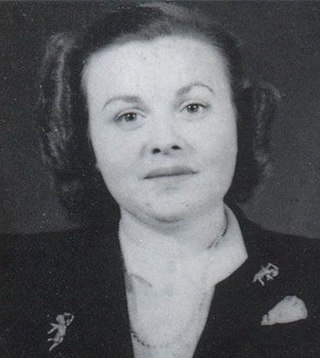
Madeleine Zoe Damerment was a French agent of the United Kingdom's clandestine Special Operations Executive (SOE) organization during World War II. The purpose of SOE was to conduct espionage, sabotage, and reconnaissance in countries occupied by the Axis powers, especially Nazi Germany. SOE agents allied themselves with resistance groups and supplied them with weapons and equipment parachuted in from England. Damerment was first involved in escape lines helping downed allied airmen escape occupied France. She fled France in March 1942 to avoid arrest. After arriving in Britain, she was recruited by the SOE. Damerment was to be a courier for SOE's Bricklayer circuit but was captured by the Gestapo on 29 February 1944 upon arrival in France. The Gestapo knew she was coming because they had captured SOE radios and were reading SOE radio messages. She was subsequently executed at the Dachau concentration camp on 13 September 1944 along with three other female SOE agents.

Suzanne Spaak, néeAugustine Lorge known as Suzette Spaak was a World War II French Resistance operative. On 21 April 1985, Yad Vashem recognized Spaak as Righteous Among the Nations, for helping to smuggle several Jewish children to safety, by providing them with ration cards and clothing.
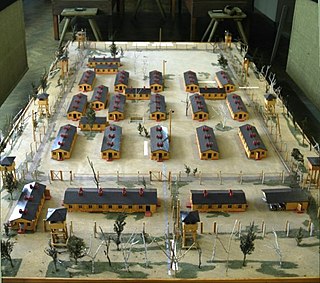
Stalag Luft III was a Luftwaffe-run prisoner-of-war (POW) camp during the Second World War, which held captured Western Allied air force personnel.

The Diary of a Young Girl, often referred to as The Diary of Anne Frank, is a book of the writings from the Dutch-language diary kept by Anne Frank while she was in hiding for two years with her family during the Nazi occupation of the Netherlands. The family was apprehended in 1944, and Anne Frank died of typhus in the Bergen-Belsen concentration camp in 1945. Anne's diaries were retrieved by Miep Gies and Bep Voskuijl. Miep gave them to Anne's father, Otto Frank, the family's only survivor, just after the Second World War was over.
During World War II, resistance movement occurred in German-occupied Europe by a variety of means, ranging from non-cooperation to propaganda, hiding crashed pilots and even to outright warfare and the recapturing of towns. In many countries, resistance movements were sometimes also referred to as The Underground. The resistance movements in World War II can be broken down into two primary politically polarized camps: the internationalist and usually Communist Party-led anti-fascist resistance that existed in nearly every country in the world; and the various nationalist groups in German- or Soviet-occupied countries, such as the Republic of Poland, that opposed both Nazi Germany and the Communists.
At the outbreak of the Second World War Nazi Germany's Kriegsmarine had 21 destroyers in service, while another one was just being completed. These 22 vessels – comprising 3 classes – had all been built in the 1930s, making them modern vessels. Including that final pre-war vessel, a further 19 were brought into service during the war and more were captured from opposing navies, including the Italian Navy after the Italian Armistice with the Allies in 1943.

Etta Candy is a fictional character appearing in DC Comics publications and related media, commonly in association with Wonder Woman. Spirited and vivacious, with a devil-may-care attitude, Etta debuted as a young white woman with red hair in 1942's Sensation Comics #2, written by Wonder Woman's creator William Moulton Marston.

The Free French Air Forces were the air arm of the Free French Forces in the Second World War, created by Charles de Gaulle in 1940. The designation ceased to exist in 1943 when the Free French Forces merged with General Giraud's forces. The name was still in common use however, until the liberation of France in 1944, when they became the French Air Army. Martial Henri Valin commanded them from 1941 to 1944, then stayed on to command the Air Army.
Paris Underground may refer to:

The Comet Line was a Resistance organization in occupied Belgium and France in the Second World War. The Comet Line helped Allied soldiers and airmen shot down over occupied Belgium evade capture by Germans and return to Great Britain. The Comet Line began in Brussels where the airmen were fed, clothed, given false identity papers, and hidden in attics, cellars, and people's homes. A network of volunteers then escorted them south through occupied France into neutral Spain and home via British-controlled Gibraltar. The motto of the Comet Line was "Pugna Quin Percutias", which means "fight without arms", as the organization did not undertake armed or violent resistance to the German occupation.
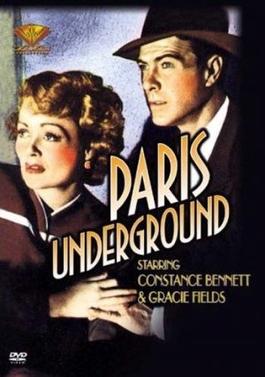
Paris Underground, also known as Madame Pimpernel, is a 1945 film directed by Gregory Ratoff, and based on the memoir of the same title by Etta Shiber.
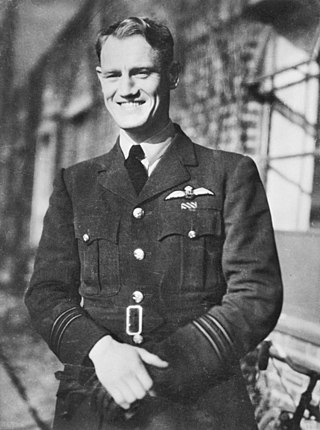
Phillip John Lamason, was a pilot in the Royal New Zealand Air Force (RNZAF) during the Second World War, who rose to prominence as the senior officer in charge of 168 Allied airmen taken to Buchenwald concentration camp, Germany, in August 1944. Raised in Napier, he joined the RNZAF in September 1940, and by April 1942 was a pilot officer serving with the Royal Air Force in Europe. On 8 June 1944, Lamason was in command of a Lancaster heavy bomber that was shot down during a raid on railway marshalling yards near Paris. Bailing out, he was picked up by members of the French Resistance and hidden at various locations for seven weeks. While attempting to reach Spain along the Comet line, Lamason was betrayed by a double agent within the Resistance and seized by the Gestapo.

Various kinds of clandestine media emerged under German occupation during World War II. By 1942, Nazi Germany occupied much of continental Europe. The widespread German occupation saw the fall of public media systems in France, Belgium, Poland, Norway, Czechoslovakia, Northern Greece, and the Netherlands. All press systems were put under the ultimate control of Joseph Goebbels, the German Minister of Propaganda.
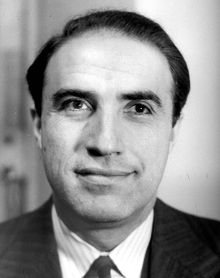
Édouard Henri Jean Bonnefous was a French politician. Before World War II (1939–45) he was active in the study of international affairs. After the war he was elected a deputy on the Rally of Left Republicans platform in 1946, and remained a deputy until 1958. He served as a minister in several cabinets, and was also active in the Council of Europe. He was a strong advocate of greater European integration. From 1959 to 1986 he was a member of the Senate, where he became a critic of General de Gaulle, and an advocate of protection of the environment.

Etta Federn-Kohlhaas or Marietta Federn, also published as Etta Federn-Kirmsse and Esperanza, was a writer, translator, educator and important woman of letters in pre-war Germany. In the 1920s and 1930s, she was active in the anarcho-syndicalist movement in Germany and Spain.

The Nightingale is a historical fiction novel by American author Kristin Hannah published by St. Martin's Press in 2015. The book tells the story of two sisters in France during World War II and their struggle to survive and resist the German occupation of France. The book was inspired by the story of a Belgian woman, Andrée de Jongh, who helped downed Allied pilots escape Nazi territory.

Micheline Aline Dumon, , was a member of the Belgian Resistance during World War II with the Comet Line. Her surname often appears misspelled as "Dumont" in historical sources. She was awarded the British George Medal and United States Medal of Freedom for helping allied airmen shot down over Belgium and France evade capture and imprisonment by Nazi Germany. As a member of the Comet Line, founded by Andrée de Jongh, she aided in the escape of more than 250 allied airmen. She guided downed airmen from Belgium and France to the border of neutral Spain from where they could be repatriated to Great Britain.

The clandestine press of the French Resistance was collectively responsible for printing flyers, broadsheets, newspapers, and even books in secret in France during the German occupation of France in the Second World War. The secret press was used to disseminate the ideas of the French Resistance in cooperation with the Free French, and played an important role in the liberation of France and in the history of French journalism, particularly during the 1944 Freedom of the Press Ordinances.
References
- ↑ "Paris Underground : Etta Shiber : Free Download & Streaming : Internet Archive" . Retrieved 2016-11-01.
- ↑ "The Underground in France | VQR Online". vqronline.org. Retrieved 2016-11-01.
- 1 2 Hore, Peter (2016-09-05). Lindell's List: Saving British and American Women at Ravensbrück. The History Press. ISBN 978-0-7509-6945-1.
- 1 2 "History, Travel, Arts, Science, People, Places | Smithsonian". smithsonianmag.com. Retrieved 2016-11-01.